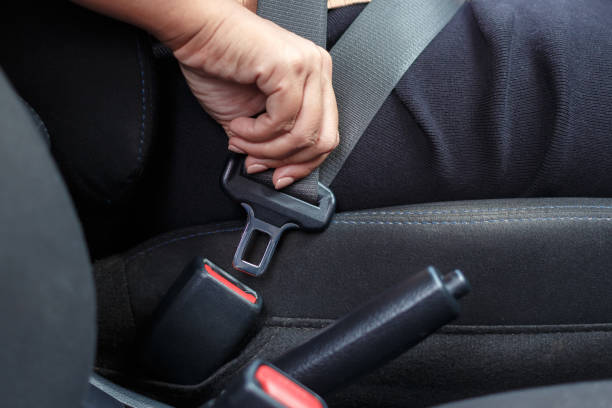Impact of the Distracted Driving on the Road Accidents: Hazards and Prevention Ideas

One major factor in road accidents worldwide is the issue of distracted driving. This can include, but is not limited to: talking or texting on your phone; eating and drinking while driving; speaking with passengers in the vehicle; changing activities from one task to another like fiddling with stereo, entertainment of navigation system. This article examines the perils of distracted driving and presents preemptive ways to mitigate it for increased road safety.
Distracted Driving Defined
In the simplest definition, distracted driving is anything that takes a driver’s focus away from their primary task of piloting a vehicle. There are three types of distractions: visual, manual and cognitive. What is a visual distraction – takes your eyes off the road, manual distractions take your hands of the wheel and cognitive distractions take our mind out driving. This can include using a mobile phone, changing the radio station or eating as well as just thinking off topic. Any of these distractions can greatly impede a driver’s capability to safely bring their vehicle under control.
The Perils of Distracted Driving
Distracted driving is essentially one of the most dangerous actions and therefore it results in tragic consequences. In the United States, 3,142 people were killed in distracted driving incidents last year alone according to the National Highway Traffic Safety Administration (NHTSA). Distracted driving is a very common problem among teenagers who text and drive, which represents all three distractions – visual, manual and cognitive. They take our attention off the road for just a few seconds and it is in these short moments that accidents at high speed come. And as for texting and driving, it increases the odds of crashing by 23 times.
Also, that facepalm to arm gesture creates risk not only for the distracted driver but also a threat to their passengers, other motorists and pedestrians alike. Where collisions are concerned, the risk of injury or death rises rapidly as distracted driving causes drivers to not pay attention to pedestrians and even changes roads surface conditions. There is also a tremendous financial impact to distracted driving accidents, including expenses for medical care, property damage and legal costs.
Statistics Highlighting the Issue
Distracted driving statistics are frightening. According to the Centers for Disease Control and Prevention (CDC), in the U.S. about 9 people are killed every day, while over 1,000 sustain injuries due to crashes that involve a distracted driver. According to the World Health Organization (WHO), distracted driving is a growing problem that accounts for at least 15 percent of all road traffic injuries and fatalities worldwide.
Distracted driving danger targeted for young drivers According to a report by the AAA Foundation for Traffic Safety, teenage drivers are four times as likely as adults to be involved in a car crash while using their cell phone. This is particularly true for younger populations who have a increased habit of multitasking and using mobile devices more often.
Avoidance Tips for Distracted Driving
Effective distracted driving prevention is a team effort involving self-accountability, public notification and legislative action. Ways to lower distracted driving risks:
- Education and Awareness Campaigns: All of which Public Awareness campaigns is one way to educate drivers about the danger associated with distracted driving. The message can be propagated by social media, tv or come with community events. By demonstrating real life incident stories and stats, the APP is creating driver behavior change.
- Legislation and Enforcement: Different legislation make it illegal to use your mobile phone while driving in most countries. The same is true of enforcing these laws with credibly high penalties so drivers are discouraged from looking down. Law enforcement must also make distracted driving initiatives a regular part of their routine patrols.
- Technology Solutions: Advancements in technology can work to solve the issue of distracted driving as well. Phones already have apps and many in-car systems can be locked to hands-free usage only, eliminating tempting distractions for drivers. Modern cars are increasingly being built with systems that alert the driver or at least look for signs of lack-of-attention.
- Employer Policies: Employers may establish policies to prevent distracted driving, particularly with employees that have a job responsibility of engaging in drive time. Make regulations regarding no cell phone usage while driving and then educate them well about this way of safe-driving. In addition, telecommunication systems can be used by employers to follow driving behavior and adherence on protection regulations.
- Personal Responsibility: Ultimately, preventing distracted driving comes down to personal responsibility. So drivers have to make sure they stay alert and focused on the road, ensuring not just their own safety but that of others as well. This involves putting mobile phones out of reach, eating/drinking away from the wheel and controlling in-vehicle distractions. This also includes understanding fatigue, and stress which can reduce your ability to concentrate or react quickly.
As a Final Consideration
The effects of distracted driving on traffic accidents are severe in terms of safety, and they carry a high cost to the economy. This involves being aware of the risks and taking steps to reduce them. Through education, legislation, technology and self-awareness we can work towards diminishing distracted driving and improving road safety generally. To keep yourself and others on the road safe, maintaining focus is critical.













Post Comment